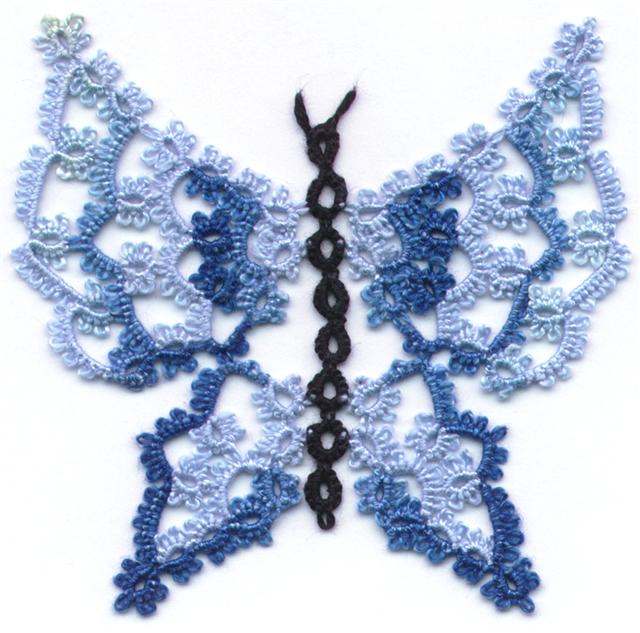I'm going to give you some tatting exercises to help get that information stuck in the back of your mind, out where you can use it. You don't have to do the exercises, but if you really want to learn, you'd be stupid not to. I learned some things about tatting and designing by making a lot of mistakes. You get to benefit from my mistakes so you can skip a lot of the cutting it off and trying again, but you only really get a feel for what works, by actually doing it.
Everyone has their favourite size of thread to work with and you can use anything you want, but for the purpose of these exercises I'd suggest size 20 for several reasons. Size 20 thread is large enough that you can easily count your stitches. You might remember what your stitch count was for various elements of the lace, but there will be times when you have to sit and count so make it easy and work with larger thread. If you plan on designing lace, usually it's because you plan to share the pattern with others. A scan of size 20 lace will give crisp clear definition to the stitches in a picture, where finer threads may not show as clearly. Size 10 thread is too fat and squishy, so that changes in your tension can change how many stitches you use.
I also recommend that you use the same solid colour thread for your exercises. Variegated thread can add dimensions to your lace giving a boring design interest that it doesn't really have. It can also make it harder to pinpoint difficulties with a design, so to begin, play with solid colours. Also different dyes can add thickness to thread and mixing colours even in the same brand of thread can make a difference. For these little samples being consistent with your thread will give you the most benefit.
Tatting generally begins with a ring. So what do you know about a ring? What's the smallest ring you can make? Is it 4 ds? 2ds? 10?
Give it a try. No, really, pick up a shuttle or needle and tat it. What did you get?
The answer is 2, one stitch on the right and one on the left. Anything smaller that 2 and you can't really close the ring, you just have a stitch and a bare thread where the ring doesn't close. You're not likely to ever see a ring with only 2 stitches unless you work on my seashell pattern, which is the only place I've ever seen a ring that small.
So if the smallest ring you can tat is 2 ds, then what is the largest ring? Know how to find out? That's right. TAT IT.
So, what did you get?
Here's my smallest ring on the top. No not the loop on the right, that's a picot. See that little blob at the base of the picot? That's it. 2 stitches. That big circle on the bottom is a ring of 100 stitches with a picot every 5 stitches. I could have made it bigger, but it got rather boring tatting it, and really, where would you ever use a ring that big?
Here is my seashell design that pattern for which is on my web site. (See the link in the side bar) See how the rings get smaller in size as they go down and the itsy bitsy 2 ds rings are at the bottom where the joins are done between half stitches because the rings are so small.
Just so your know, I use my own designs here, not because they are the best examples, but because they're mine and I own the copyright. I also use my designs so that I can criticize them without hurting anyone else's feelings.
OK. So now that we know how small a ring can be and how big a ring can be, what kind of stitch count do you think you need for a simple edging like this?
There's only one way to find out. TAT IT. You don't need to tat a lot of lace, just 5 or 6 rings and chains to give a realistic idea of what it looks like.
Keep all of your little samples in a small plastic bag because you'll want to refer back to them again later.
There will be a new lesson every few weeks and if you have questions or comments, please post them in the comments and I'll address them in the next lesson.




4 comments:
Hi, Sharon. I'm excited to see you offering these tutorials through your blog. I've posted a link to this lesson from my blog in hopes that more people will find their way to lesson one.
What a wonderful inspiration, and great tips!!! Thank you :)
Thank you so much for sharing your lessons, et al, Sharon ! I am picking up my shuttles right away to TAT IT :-)
And thanks to Eliz - I followed her link here :-)
I am happy to have found your blog this morning and that you are offering lessons. I learned so much from your class and am excited to be building upon them with the lessons. Look forward to more in the future. Time to get shuttles and tat.
Post a Comment